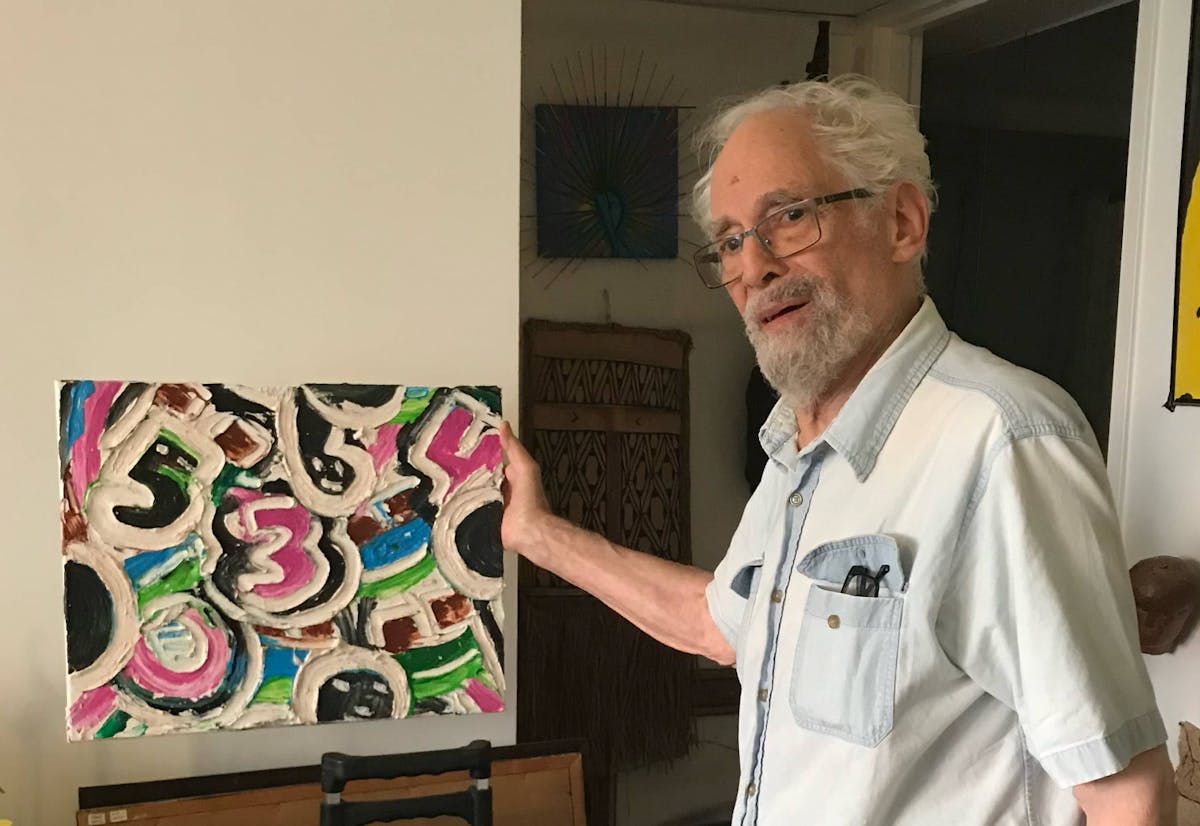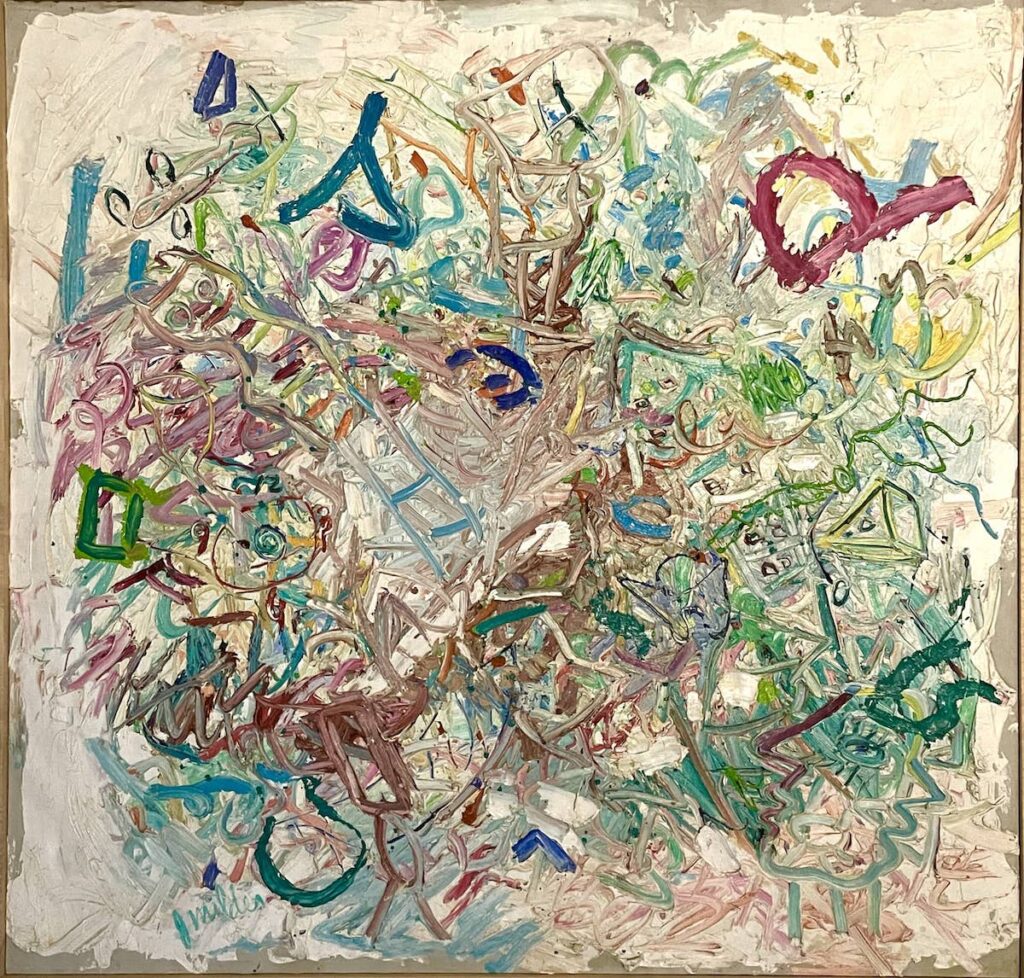At 89, Jay Milder, an Heir of Abstract Expressionism Who Forged His Own Iconoclastic Path, Shows No Sign of Stopping
His paintings seethe with a vitalism feral in its intensity but celebratory in its intent.

Jay Milder was a close friend of Yves Klein, Red Grooms, and Bob Thompson; mentored by Andre Lhote, Ossip Zadkine, and Hans Hoffman; and inspired the young Jean-Michel Basquiat. A noted critic, Donald Kuspit, calls his “Messiah Series” the “finest biblical pictures of the twentieth century after Emil Nolde.”
As a successful heir of the Abstract Expressionist school, Mr. Milder has traced an extraordinary trajectory in art. Never a follower, he has spent seven decades forging his own iconoclastic path during painting’s most dizzying century.
Mr. Milder began his career in 1958 at New York, fresh from a tour of Europe and North Africa. “It was everyone,” he recalls. “Anyone you could think of. New York was where the art was.” Nearly every giant of the new American painting was working there when he landed.
He spent his nights at the Cedar Bar and his days toiling in studios with his close friends Thompson and Mr. Grooms, with whom he shared a loft at the Lower East Side. Living was cheap and painting was the only thing. “We winged it,” he said, with a wry smile.
Mr. Milder has always remained a bit of an enigma, hewing a path marked by many stylistic about-faces. Part of the reason may be that, for him, painting has always been a spiritual rather than a purely aesthetic endeavor. He is a seeker first and foremost.
A direct descendent of Rabbi Nachman of Breslov, Mr. Milder has always been steeped in his own brand of Jewish mysticism and Kabbalah, a firm belief in the immanence of the divine in the everyday.
“Kabbalah is everything” he states with calm finality. His paintings seethe with a vitalism feral in its intensity but celebratory in its intent. Joy and affirmation would seem to be his works two most consistently defining characteristics.
While Abstract Expressionism is the school Mr. Milder is most frequently associated with, the term “figurative expressionist” applies to him far more accurately.

Mr. Milder does have the bold gestural looseness of his early peers, and his obsession with the materiality of his paints, carried out to the point of adding volcanic ash, is also in line with them.
Yet he also includes elements of figuration with biblical and mythical reference, along with unabashed commentary on the social and human world. Ideas and symbols can’t help but proliferate in his painting. This is what has consistently set him apart.
“I don’t pay much attention to the vagaries of the art world.” Mr. Milder has said about his artistic temperament. “I’m a hermit.”
His “Subway Runner’s Series,” which garnered him his first major New York show at Martha Jackson gallery in 1964, exemplifies his singular vision. The figures ostensibly address New Yorkers rushing for the train. On closer reading, however, they serve as allegories of the fall, parables of urban struggle.
In Mr. Milder’s rich canvases, the human and the divine are hopelessly and sometimes humorously entangled, an ecstatic jumble that his loaded brush can scarcely convey. Nor does he distinguish between high and low, ancient or contemporary.
All aspects of the human comedy are welcome in Mr. Milder’s work. In a painting from his Noah’s Ark series, “On the Way to the Ark II,” a grinning Krazy Kat appears next to a squiggly Dachshund.
Mr. Milder was obviously not the only painter who commingled abstraction and figuration. Thompson, subject of a recent retrospective at Michael Rosenfeld this summer, also painted figures and animal-human hybrids that characterize Mr. Milder’s painting of the same period.
His other lifelong friend Mr. Grooms — they would open City Gallery and give a young Jim Dine and Claes Oldenberg their first shows — also used a bold figurative sensibility in his work.
However, Mr. Milder persisted in his style when figuration, and even painting itself, seemed suspect. Pop, Conceptualism, Minimalism and Fluxus took center stage, creating subtle tensions in the art world.
Mr. Milder continued to show successfully in New York and abroad, but a group of his fellow artists felt the need to push back. He formed the Rhino Horn group, an art movement dedicated to a new “humanistic art completely engaged with life and emotion.” It was a passionate statement at a time when the most critically acclaimed art was far more conceptually cool.
Mr. Milder would eventually be vindicated overseas in Germany, when other figurative abstractionists such as Georg Baselitz, AR Penck, Sigmar Polke, and Marcus Lupertz put dense, complex painting center stage again with Neo Expressionism. Mr. Milder could be called prescient, an artist ahead of his time.
He also may have also inspired some younger genius. His daughter, Rifka Milder, herself a painter of note, remembers bringing an adolescent Basquiat to her father’s studio. “His eyes nearly bugged out of his head,” she recalls. “He was struck by the passion and energy, the fearlessness in my fathers painting. All he could say was, ‘Can I see more?’”
Mr. Milder has since deepened his obsession with numerology, creating colorful jumbles of Kabbalistic numbers and geometric shapes. He continues to mine the dense relationship between spiritual contemplation and painting in canvas after canvas. His routine has been the same for decades.
He listens to jazz and Delta Blues, immersing himself in a painterly trance. Though he suffered a stroke in the last year, Mr. Milder has recovered well and is looking forward to a retrospective in Cuba.
At 89, he remains one of the last living veterans of mid-20th century painting who continues to work. “Things got jumbled during Covid, but it’s moving forward” he says.
If critical acclaim has yet to prove commensurate with Mr. Milder’s contribution, a few prescient critics have already spoken to his greatness. The painter and writer Anne Tabachnik once observed that Mr. Milder “still paints in the religious frenzy that produced Abstract Expressionism at its best,” adding that “there are several painters who are also still viable, but nobody paints as well as Jay Milder.”

